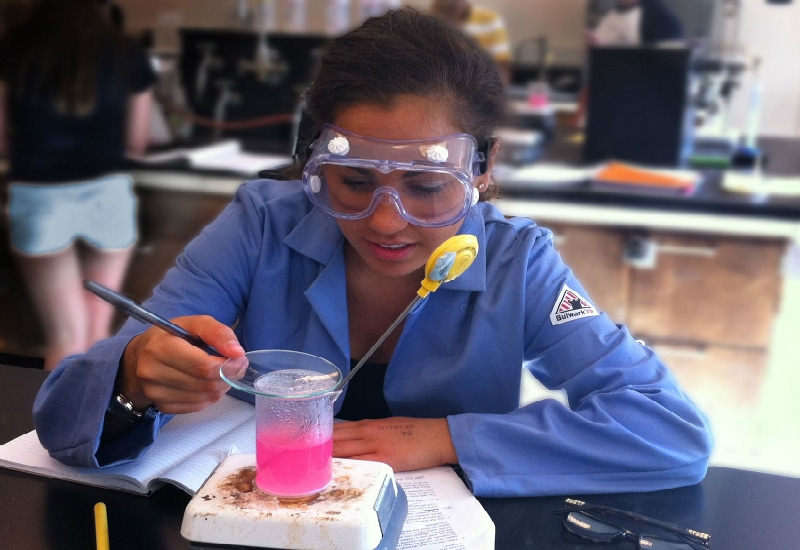
PLEASANTON, Calif. (WOMENSENEWS)—Sammy Vasquez has an irrational fear of math and physics. But she loves biology. As a rising senior in high school here, Vasquez has taken six biology class, ranging from botany to zoology but has only taken the minimum physics and math required to fulfill her graduation credits.
“I really don’t enjoy math, so I plan on pursuing a career in biology,” says the 17-year-old, who spoke recently by phone. “I think my style of thinking and analytical abilities are more fit for biology than math and physics.”
Women are expanding their ranks in all the so-called STEM fields of science, technology, engineering and mathematics. But the sharpest gains are in the life sciences (i.e. biology, psychology, social sciences). While women are approaching 50 percent of the workforce fields, they are vastly underrepresented in engineering, physics, astronomy and computer science. In these “physical sciences,” they represent less than 30 percent.
The same trends were observed among female students at MIT, according to a study by the school a few years ago.
Researchers have studied the reasons for women’s minority status in the physical sciences.
One factor is “structural discrimination,” a tendency for males to occupy the top positions and hire other men, reports Elaine Howard Ecklund, a sociology professor at Rice University, in a 2012 study. Ecklund also reports that the perceived emotional content of biological research can make it more appealing to women to pursue as a career.
However, emerging fields that integrate math, computer science, physics and biology—such as bioengineering and bioinformatics—may begin to involve more girls into areas involving physical sciences.
Ecklund writes that promoting the social benefits of physics science research at an earlier age will help recruit more girls into the engineering, computer science, physics, and mathematics fields. Positive role models can also play a major role in pushing girls toward the physical sciences.
Sometimes, as in the case of Aoife O’Farrell, that role model can be a big sister.
O’Farrell, a rising senior at Amador Valley High School plans to apply to college as a biomedical engineering major this fall. “My sister is also studying bioengineering at UC Santa Cruz, so her positive experience also convinced me to pursue the same field,” said in an email interview.
Erin Mordecai, an assistant professor in Biology at Stanford University in Palo Alto, California, conducts research that involves math, computer science and ecology; a blend of the physical and biological sciences.
In an email interview, Mordecai said she thinks that one reason women tend to gravitate to certain fields is that they feel more comfortable, included, and encouraged when there are already a lot of women in those fields.
“I also think that a lot of people, not just women, tend to give up on math if they find it difficult or intimidating, or if they get behind,” Mordecai added. “And then they have an aversion to fields they perceive as math-heavy. This kind of attitude seems to be more socially accepted in women.”
Mordecai says that men who are established in the physical sciences can do a lot to recruit more women. She recalls being the only female student in her freshman calculus course at college. However, the class was far from intimidating. It was enriching and collaborative experience and fueled her interest in pursuing higher level math in college.
Megan Vakil, a third-year software engineering student at the Osmania University’s College of Engineering in Andhra Pradesh, India, recently got a job offer at CallidusCloud, a software company whose HQ is in Dublin, California.
“Since most of the physical sciences are still male-dominated, we women need the men to be more supportive and welcoming in order to begin to bridge the gap,” says Vakil, in a recent email. “At this point, it depends equally on the men as it does on the women.”
It can also depend heavily on the messages that girls get at home.
As an incoming college freshman at Chaitanya Bharathi Institute of Technology in Hyderabad, India, Shreya Reddy says that in her case the source of the bias against physical sciences is easy to pinpoint: her family.
She says that her relatives have always encouraged her to pursue medicine and her older brother to pursue engineering. “It has always been like this, even with my cousins and extended family,” she said in an email interview. “Everyone in my family has always pushed the girls to become doctors and the boys to become engineers.”


